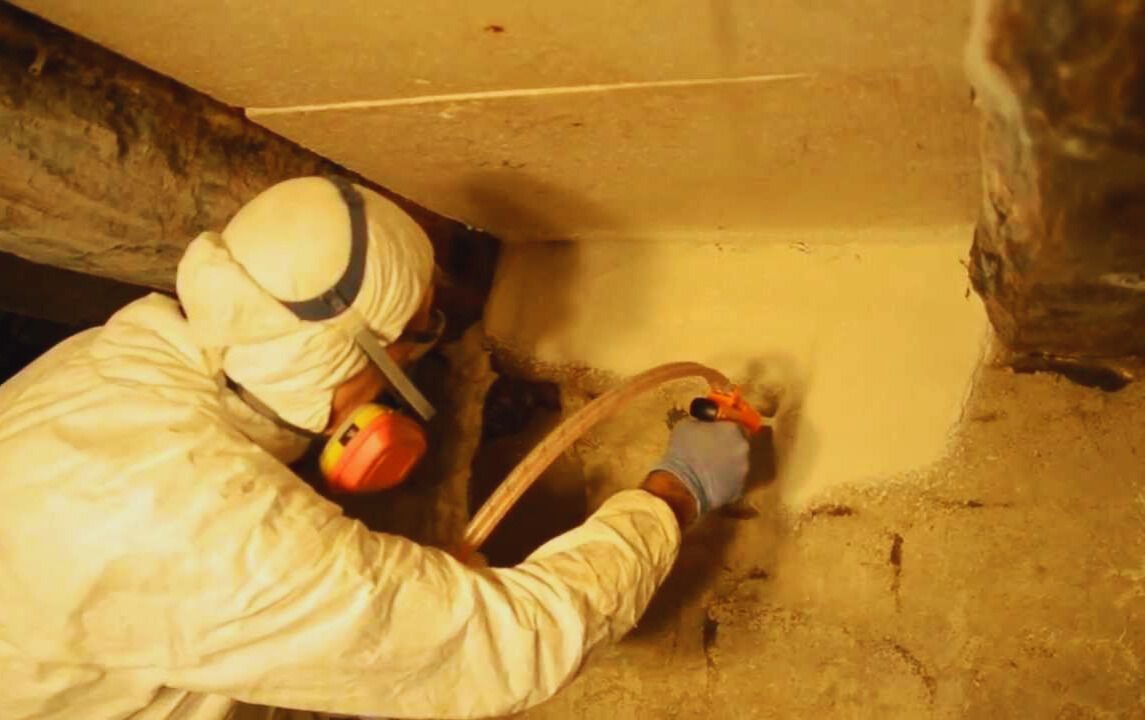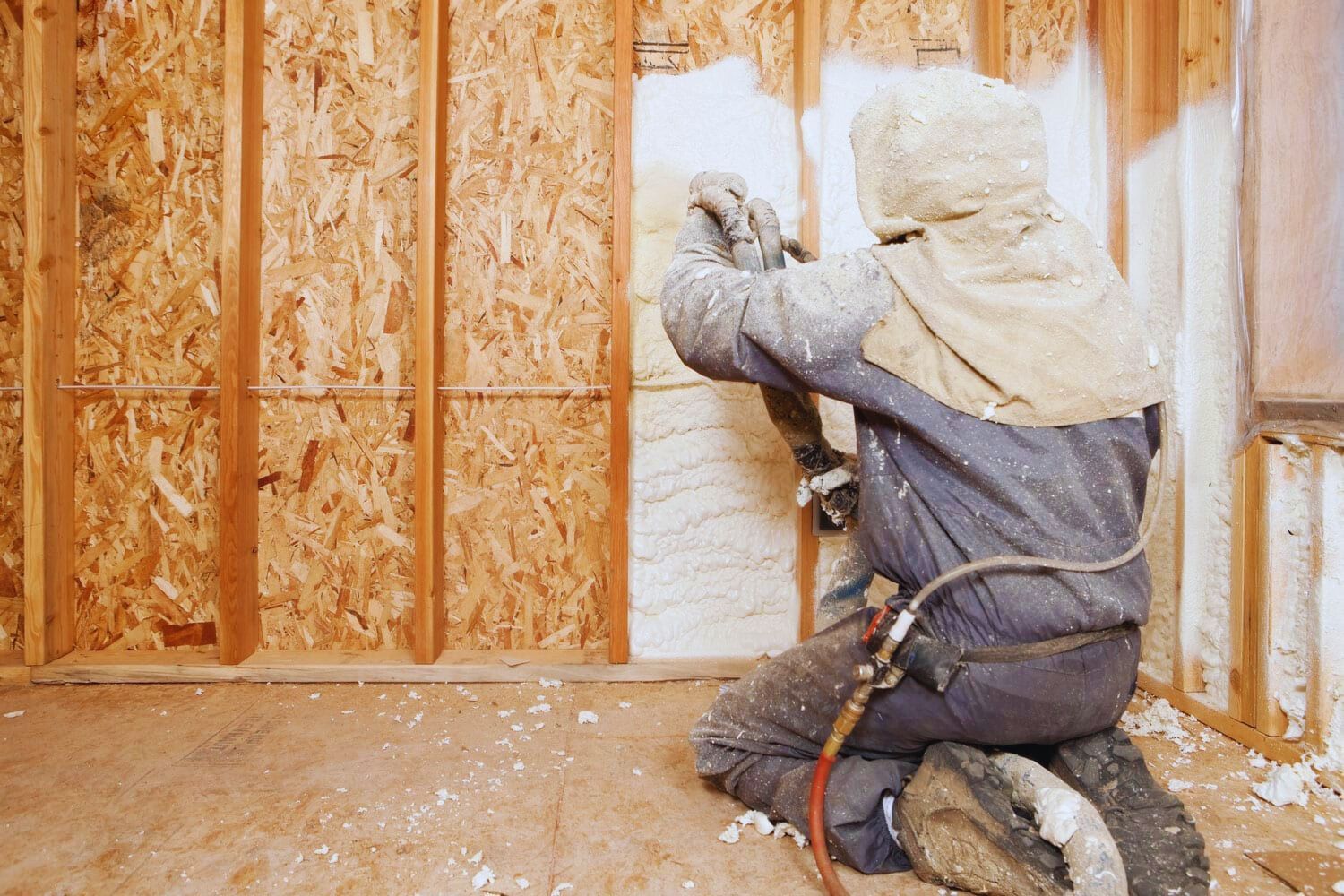Closed Cell Spray Foam Insulation: Key data points reveal superior energy efficiency and cost savings
Closed cell spray foam insulation has emerged as a top choice for homeowners seeking superior energy efficiency and comfort. This advanced insulation material offers exceptional thermal resistance, with R-values typically ranging from R-6 to R-7 per inch. Its high insulating properties can lead to significant energy savings, often reducing heating and cooling costs by up to 50% compared to traditional insulation methods.
Beyond its impressive thermal performance, closed cell spray foam creates an airtight and moisture-resistant barrier. This dual protection helps prevent mold growth and enhances indoor air quality. The foam's density and structure also contribute to improved structural integrity, adding strength to walls and roofs while effectively blocking external noise.
As energy costs continue to rise, investing in closed cell spray foam insulation can provide long-term financial benefits. While initial installation costs may be higher than traditional insulation, the energy savings and improved home comfort often result in a positive return on investment within a few years. Additionally, its durability and resistance to settling ensure consistent performance for decades, making it a wise choice for homeowners looking to enhance their property's value and efficiency.
What Is Closed Cell Spray Foam Insulation?
Closed cell spray foam insulation is a high-performance insulation material applied as a liquid that expands into a solid foam. It consists of tiny cells filled with gas and completely sealed from surrounding cells.
This insulation creates an airtight barrier when sprayed onto surfaces. The closed cell structure gives it a higher density and R-value compared to open cell foam.
Closed cell spray foam has an R-value of approximately 6-7 per inch thickness. This makes it one of the most effective insulation materials available.
The foam adheres strongly to most building materials, including wood, metal, and concrete. It can conform to irregular shapes and fill small gaps and cracks.
When applied, the liquid components react and expand up to 30-60 times their original volume. This expansion helps the foam penetrate and seal hard-to-reach areas.
Closed cell spray foam acts as both an insulator and an air barrier. It blocks heat transfer through conduction, convection, and radiation.
The material is moisture-resistant and can act as a vapor barrier in many applications. This helps prevent condensation issues within wall cavities.
Common uses include insulating walls, roofs, attics, crawl spaces, and rim joists in both residential and commercial buildings.
Core Advantages of Closed Cell Spray Foam Insulation
Closed cell spray foam insulation offers exceptional thermal performance, structural enhancement, moisture protection, and air sealing capabilities. These features contribute to improved energy efficiency and comfort in both residential and commercial buildings.
Superior R-Value
Closed cell spray foam boasts an impressive R-value of 6.0 to 7.0 per inch, significantly higher than traditional insulation materials. This high R-value allows for better thermal resistance in thinner applications. A 2-inch layer of closed cell foam can provide an R-value of 12-14, compared to fiberglass batts which would require about 4 inches to achieve a similar rating.
The dense structure of closed cell foam creates a more effective thermal barrier. This superior insulation performance leads to reduced energy consumption for heating and cooling, potentially cutting energy costs by 30-50% in some cases.
Enhanced Structural Integrity
Closed cell spray foam adds rigidity and strength to building structures. When applied, it expands and adheres to surfaces, creating a solid bond between studs, joists, and other building materials.
This adhesive quality can increase wall racking strength by 300% in some applications. The added structural support is particularly beneficial in areas prone to high winds or seismic activity.
Closed cell foam's rigidity also helps reduce wall movement and flexing, which can lead to fewer cracks and gaps over time. This contributes to the long-term durability and stability of the building envelope.
Moisture Barrier Properties
With its closed cell structure, this insulation type acts as an effective moisture barrier. It has a low water vapor permeance rating of around 0.8 perms at 2 inches thickness, making it a Class II vapor retarder.
This moisture-resistant quality helps prevent water infiltration and reduces the risk of mold and mildew growth. In flood-prone areas, closed cell foam can limit water absorption and damage to building materials.
The moisture barrier properties also contribute to better indoor air quality by reducing humidity levels and potential allergens associated with moisture issues.
Air Sealing and Energy Efficiency
Closed cell spray foam creates an airtight seal, effectively blocking air leaks and drafts. It can reduce air infiltration by up to 98% when properly installed.
This air sealing capability leads to improved energy efficiency by minimizing heat loss in winter and heat gain in summer. Buildings insulated with closed cell foam often see a 20-40% reduction in heating and cooling costs.
The airtight barrier also helps control indoor humidity levels and reduces the entry of outdoor pollutants, allergens, and noise. This contributes to a more comfortable and healthier indoor environment for occupants.
Comparative Analysis With Other Insulation Types
Closed cell spray foam insulation offers unique advantages compared to traditional insulation materials. Its superior air sealing and moisture resistance set it apart from alternatives like fiberglass, open cell foam, and rigid foam boards.
Vs. Fiberglass Insulation
Closed cell spray foam provides significantly better insulation than fiberglass. It has an R-value of R-6 to R-7 per inch, compared to fiberglass at R-2.2 to R-2.7 per inch. This means closed cell foam achieves the same insulating power in a much thinner layer.
Closed cell foam creates an air-tight seal, while fiberglass allows air movement. This air sealing ability makes closed cell foam 24-50% more effective at reducing energy costs.
Unlike fiberglass, closed cell foam doesn't absorb moisture or promote mold growth. It maintains its insulating properties even when wet.
Vs. Open Cell Spray Foam
Closed cell foam has a higher R-value than open cell foam - R-6 to R-7 per inch versus R-3.6 to R-3.8 for open cell. This allows closed cell to provide better insulation in a thinner application.
The density of closed cell foam (2 lbs/ft³) is much higher than open cell (0.5 lbs/ft³). This gives closed cell foam greater structural strength and rigidity.
Closed cell foam acts as a vapor barrier at 1-2 inches thick. Open cell foam is vapor permeable and requires an additional vapor barrier in many applications.
Vs. Rigid Foam Boards
Closed cell spray foam conforms to irregular surfaces and fills gaps, unlike rigid foam boards. This eliminates thermal bridging through framing members.
Spray foam provides a continuous air barrier. Rigid foam requires taping seams to achieve an air seal, which is less effective and more labor-intensive.
The R-value of closed cell spray foam (R-6 to R-7 per inch) is higher than most rigid foam boards (R-4 to R-6.5 per inch).
Closed cell foam adds structural strength to walls. Rigid foam boards do not contribute to structural integrity.
Environmental Impact and Sustainability
Closed-cell spray foam insulation offers significant environmental benefits through its longevity, composition, and energy-saving properties. These factors contribute to reduced resource consumption and lower carbon emissions over time.
Longevity
Closed-cell spray foam insulation has an exceptionally long lifespan, often lasting 50 years or more. This durability means fewer replacements are needed over a building's lifetime, reducing waste and resource consumption.
The material maintains its insulating properties for decades, ensuring consistent energy efficiency. Its resistance to moisture and mold growth further extends its useful life.
Compared to traditional insulation materials that may degrade or settle over time, closed-cell spray foam retains its shape and effectiveness. This longevity translates to fewer landfill contributions from discarded insulation materials.
Material Composition
Closed-cell spray foam is made from polyurethane, which has undergone improvements to reduce its environmental impact. Modern formulations use low-global warming potential (GWP) blowing agents.
The insulation's dense structure requires less material to achieve high R-values compared to other options. This efficiency in material use reduces the overall environmental footprint of production and transportation.
Some manufacturers incorporate recycled or bio-based content in their formulations, further lowering the product's environmental impact. The Spray Polyurethane Foam Alliance (SPFA) conducted a life cycle assessment in 2012, confirming the material's reduced environmental impact compared to previous generations.
Energy Savings Over Time
Closed-cell spray foam's superior insulating properties lead to significant energy savings in buildings. Its high R-value of up to 6.9 per inch surpasses many traditional insulation materials.
Buildings insulated with closed-cell spray foam can reduce heating and cooling energy consumption by up to 50% compared to uninsulated or poorly insulated structures. This translates to lower carbon emissions from reduced energy use over the building's lifetime.
The air-sealing properties of closed-cell spray foam further enhance energy efficiency by eliminating drafts and air leaks. This comprehensive insulation and air barrier system contributes to a building's overall sustainability by minimizing heat loss and gain.
Installation Process and Considerations
Proper installation of closed cell spray foam insulation requires careful planning and expert execution. Safety and preparation are critical to achieve optimal results and ensure long-term performance.
Preparation Requirements
The installation area must be thoroughly cleaned and cleared of debris. All surfaces should be dry and free from moisture, oil, or grease. Repair any damaged areas in the substrate before application. Cover windows, doors, and other openings with plastic sheeting to protect from overspray.
Temperature control is crucial. The ambient temperature should be between 40°F and 100°F for most products. Substrate temperatures typically need to be at least 5°F above the dew point to prevent condensation issues.
Ventilation systems should be turned off during application and for 24-48 hours after to allow proper curing. Remove or cover HVAC equipment in the work area.
Professional Application
Closed cell spray foam requires specialized equipment and trained technicians. The two-component foam is mixed at the spray gun nozzle and applied in layers or "lifts" of 1-2 inches thick.
Technicians use spray guns connected to heated hoses and a proportioner that precisely mixes the A and B components. The foam expands rapidly, filling gaps and adhering to surfaces.
Multiple passes are often needed to achieve the desired thickness. Each layer must cure for 15-30 minutes before the next application. Total cure time is typically 24 hours.
Quality control measures include frequent depth checks and visual inspections for gaps or imperfections. Trimming excess foam may be necessary for a smooth finish.
Safety Protocols
Proper personal protective equipment (PPE) is essential. Installers must wear full-body protective suits, gloves, and full-face respirators with organic vapor cartridges.
The work area should be cordoned off and access restricted to trained personnel only. Signage warning of chemical use must be posted.
Fire safety measures include having fire extinguishers readily available. Some formulations may require a thermal barrier coating for fire protection.
Adequate ventilation is critical during and after installation. Use of exhaust fans and air scrubbers helps remove fumes and particulates. Re-entry times for non-installers vary but are typically 24-48 hours post-application.
Lifecycle and Maintenance
Closed cell spray foam insulation offers exceptional longevity and minimal upkeep requirements. Its robust nature and resistance to environmental factors contribute to an extended service life, while proper care can further enhance its performance over time.
Durability
Closed cell spray foam insulation boasts remarkable durability, often lasting for the entire lifespan of a building. Its dense structure resists settling, sagging, and deterioration, maintaining its insulating properties for decades. Studies show that properly installed closed cell spray foam can retain over 95% of its R-value after 50 years.
This insulation type withstands moisture, mold, and pests, reducing the risk of degradation. Its ability to adhere tightly to surfaces prevents air leaks and structural shifts that could compromise its effectiveness.
Inspection and Repair
Regular inspections of closed cell spray foam insulation are typically unnecessary due to its stability. However, annual visual checks can identify potential issues early on. Look for any signs of physical damage, such as cracks or gaps, particularly around areas prone to movement like windows and doors.
In rare cases where repairs are needed, they are usually localized and straightforward. Small damaged areas can be filled with compatible spray foam products or sealants. For larger issues, consulting a professional insulation contractor is recommended to ensure proper repair techniques are employed.
End-of-Life Recycling Options
While closed cell spray foam insulation has a long lifespan, eventual replacement or building demolition necessitates consideration of disposal options. Currently, recycling opportunities for spray foam insulation are limited but evolving.
Some specialized facilities can process and repurpose foam insulation into new products. Research in 2024 indicates that chemical recycling methods are advancing, potentially allowing for the breakdown of polyurethane foam into its original components for reuse.
For now, responsible disposal often involves professional removal and transport to appropriate waste management facilities. As sustainability efforts progress, more eco-friendly end-of-life solutions for closed cell spray foam insulation are likely to emerge.
Case Studies and Performance Data
Numerous real-world applications demonstrate the effectiveness of closed-cell spray foam insulation in improving energy efficiency and building performance. Both residential and commercial projects have seen significant benefits.
Residential Applications
A 2022 study of 100 homes in the Midwest found that those using closed-cell spray foam insulation reduced energy bills by an average of 35% compared to traditionally insulated homes. The airtight seal provided by the foam led to a 40% decrease in drafts and cold spots.
In coastal regions, closed-cell foam's moisture resistance proved invaluable. A Florida study showed homes with this insulation experienced 60% less water intrusion during severe storms compared to those without.
One striking example is a net-zero energy home in Colorado. By utilizing closed-cell foam throughout, the house achieved an impressive HERS Index score of 5, indicating 95% greater energy efficiency than a standard new home.
Commercial Building Projects
Large-scale commercial applications have also yielded impressive results. A 10-story office building in Chicago reduced its annual heating and cooling costs by 28% after retrofitting with closed-cell spray foam insulation.
In warehouse settings, the impact is equally significant. A distribution center in Texas saw a 45% reduction in temperature fluctuations, leading to improved inventory management and lower HVAC costs.
Closed-cell foam's structural benefits shine in industrial applications. A manufacturing facility in Michigan reported a 15% increase in roof strength after applying a 2-inch layer of closed-cell foam, enhancing the building's overall durability.
Educational institutions have benefited too. A university in California achieved LEED Platinum certification partly due to the superior insulation provided by closed-cell spray foam, contributing to a 40% reduction in energy consumption.
Investment and Cost Analysis
Closed cell spray foam insulation requires careful consideration of upfront expenses and long-term financial benefits. Understanding the cost structure and potential savings helps homeowners make informed decisions about this insulation option.
Initial Costs
Closed cell spray foam insulation typically costs $1.00 to $3.00 per square board foot for a 1-inch thick application. This price range is higher than traditional insulation materials like fiberglass or cellulose. Several factors influence the total cost:
- Home size and insulation area
- Insulation thickness required
- Accessibility of installation areas
- Local labor rates
For a 2,000 square foot home, initial costs can range from $4,000 to $12,000 or more, depending on these variables.
Long-Term Savings
Despite higher upfront costs, closed cell spray foam offers substantial long-term savings:
- Energy bills can decrease by 20-50% annually
- HVAC system efficiency improves, reducing maintenance costs
- Air sealing properties minimize drafts and heat loss
- Moisture resistance prevents mold growth and associated repair expenses
A typical homeowner may save $300-$900 per year on energy costs alone. Additional savings come from avoided repairs and increased equipment longevity.
ROI Calculations
Return on investment (ROI) for closed cell spray foam insulation is often favorable:
- Energy savings usually offset initial costs within 3-7 years
- Home value increases by 5-10% with high-quality insulation
- Improved comfort and indoor air quality provide intangible benefits
Example ROI calculation:
- Initial cost: $8,000
- Annual energy savings: $600
- Payback period: 13.3 years
- 20-year savings: $4,000 (not accounting for energy price increases)
This investment becomes more attractive when factoring in increased home value and non-financial benefits.
Regulations and Code Compliance
Closed cell spray foam insulation must adhere to various building standards and regulations to ensure safety and performance. These requirements span national, state, and local levels, with specific guidelines for installation and use.
Building Standards
Closed cell spray foam insulation typically needs to meet ASTM E84 standards for flame spread and smoke development. The material should have a flame spread index of 75 or less and a smoke-developed index of 450 or less.
Products must also comply with ICC-ES AC377 criteria for spray-applied foam plastic insulation. This includes fire performance, thermal resistance, and durability requirements.
Many manufacturers obtain third-party certifications like UL listings to demonstrate compliance with these standards.
State and Local Codes
State and local building codes often have specific requirements for spray foam insulation. These may include:
- Minimum R-value requirements
- Fire barrier specifications
- Vapor retarder requirements
- Installation location restrictions
For example, some jurisdictions mandate R-20 wall insulation in new construction. Others require intumescent coatings over spray foam in certain applications.
Always check local codes before installation, as requirements can vary significantly between regions.
International Building Code (IBC) Alignment
The IBC provides guidelines for spray foam insulation use in commercial buildings. Key points include:
- Section 2603: Foam plastic insulation
- Section 2603.3: Surface burning characteristics
- Section 2603.4: Thermal barrier requirements
IBC 2021 requires a 15-minute thermal barrier over most spray foam applications. Exceptions exist for certain attic and crawl space installations.
The code also mandates specific fire testing for special approval of foam plastics without thermal barriers in some scenarios.
Builders and contractors must ensure their spray foam installations align with the latest adopted version of the IBC in their area.
You might also like
GPI Articles


Request Service Today!
Thank you for contacting us.
We will get back to you as soon as possible.
Oops, there was an error sending your message.
Please try again later.
Revolutionize your living experience with our top-tier spray foam insulation service, designed to elevate your home's energy efficiency and comfort levels to new heights. Our dedicated team of professionals brings years of expertise to every project, ensuring precise installation of high-quality spray foam insulation throughout your entire home. Bid farewell to pesky drafts, soaring energy bills, and uneven indoor temperatures as our meticulously applied insulation seals every nook and cranny, creating a cozy and consistent climate year-round. Not only does our insulation solution enhance your comfort, but it also promotes environmental sustainability by reducing energy waste and lowering your carbon footprint. Rest easy knowing that our comprehensive insulation package is tailored to suit your home's specific needs, providing lasting performance and peace of mind for you and your family. Experience the transformative power of superior insulation with our trusted service. Interested in knowing more? Check out our Blog!






